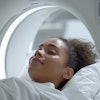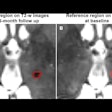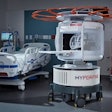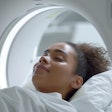An AI-based technique used to analyze MRI exams taken of children with brain tumors called gliomas shows promise for predicting recurrence, according to a study published April 24 in the New England Journal of Medicine AI.
The findings could improve care for these patients, who tend to require ongoing surveillance imaging, said senior author Benjamin Kann, MD, of Mass General Brigham in Boston, in a statement released by the journal.
"Many pediatric gliomas are curable with surgery alone, but when relapses occur, they can be devastating," Kann noted. "It is very difficult to predict who may be at risk of recurrence, so patients undergo frequent follow-up with magnetic resonance imaging for many years, a process that can be stressful and burdensome for children and families. We need better tools to identify early which patients are at the highest risk of recurrence."
Recurrence of pediatric glioma can cause morbidity and mortality, the team explained, but it can be tricky to predict recurrence patterns using clinical and genomic markers. As a result, almost all children with gliomas undergo frequent, long-term MRI brain surveillance regardless of their individual recurrence risk.
A research team led by Divyanshu Tak, also of Mass General Brigham, investigated whether AI-supported evaluation of these patients' MRI scans could help predict glioma recurrence. The group used a temporal deep-learning approach to train a deep-learning model to synthesize findings from multiple brain scans taken over the course of several months after surgery (rather than from single images). They then calibrated the model to predict the primary end point: that is, one-year recurrence of pediatric gliomas from the patient's last MRI exam. The study included 3,994 scans from 715 pediatric patients with low- and high-grade gliomas.
The authors reported the following:
- The temporal learning model predicted recurrence of either low- or high-grade glioma by one-year post-treatment with an accuracy of 75% to 89% -- better than the accuracy associated with predictions based on single images, which was roughly 50%.
- Providing the models with images from more MRI exams increased their prediction accuracy, but this improvement plateaued after four to six exams.
"Using our tailored SSL technique, temporal learning, consistently yielded superior performance across all datasets and helped the model establish informative, generalizable features that could be transferred to the setting of recurrence prediction," the group wrote.
Further clinical trials are needed to determine if AI-informed risk predictions can result in patient care improvements -- whether by reducing imaging frequency for low-risk individuals or by proactively treating high-risk ones with targeted therapies.
"We have shown that AI is capable of effectively analyzing and making predictions from multiple images, not just single scans," Tak said in the journal statement. "This technique may be applied in many settings where patients get serial, longitudinal imaging, and we’re excited to see what this project will inspire."
The complete study can be found here.



.fFmgij6Hin.png?auto=compress%2Cformat&fit=crop&h=100&q=70&w=100)





.fFmgij6Hin.png?auto=compress%2Cformat&fit=crop&h=167&q=70&w=250)











